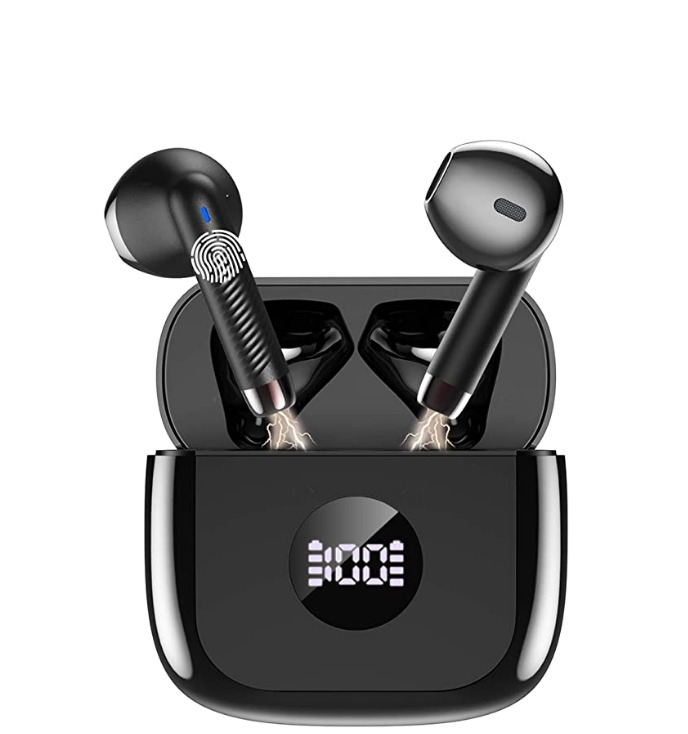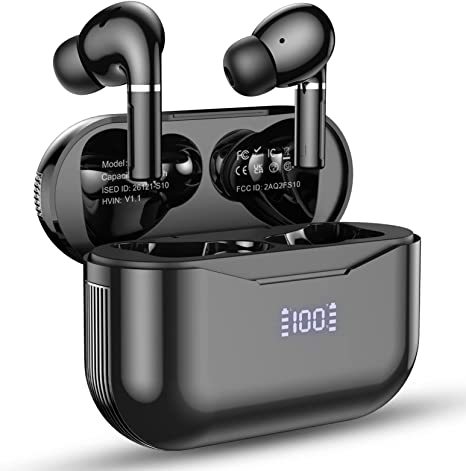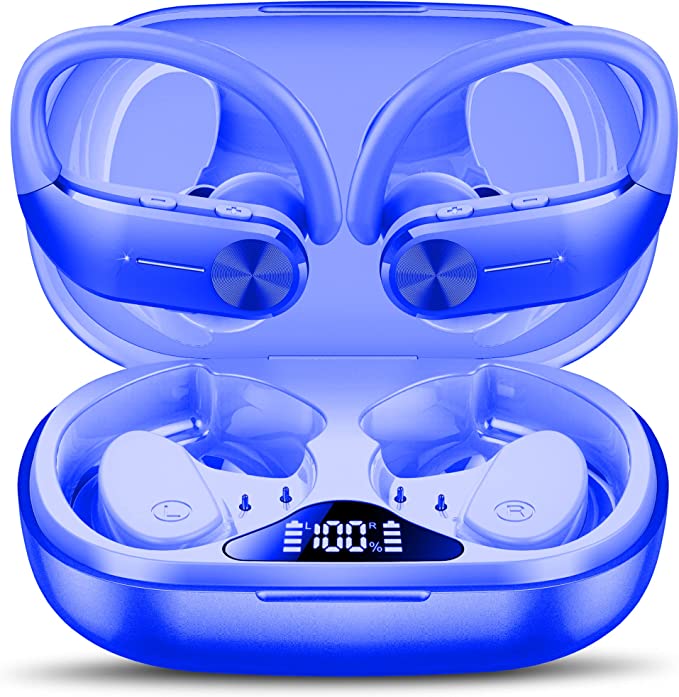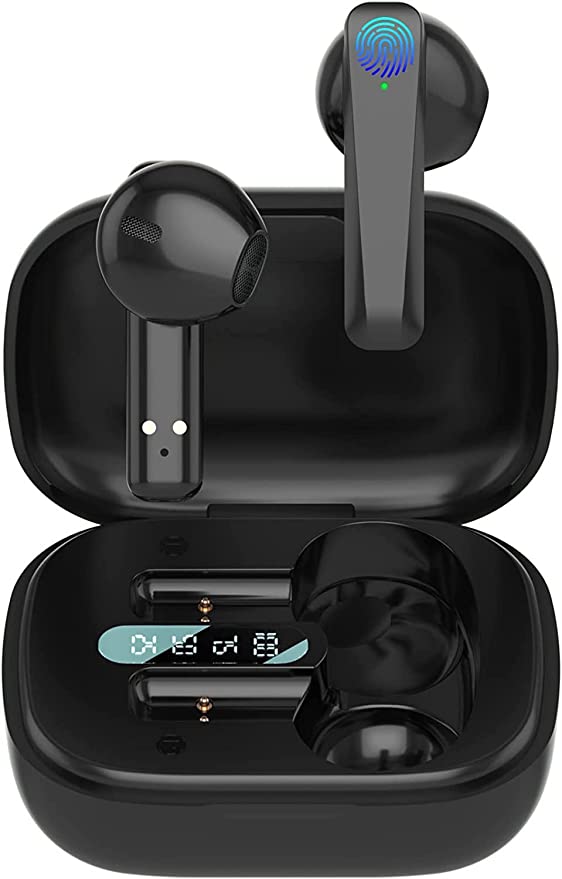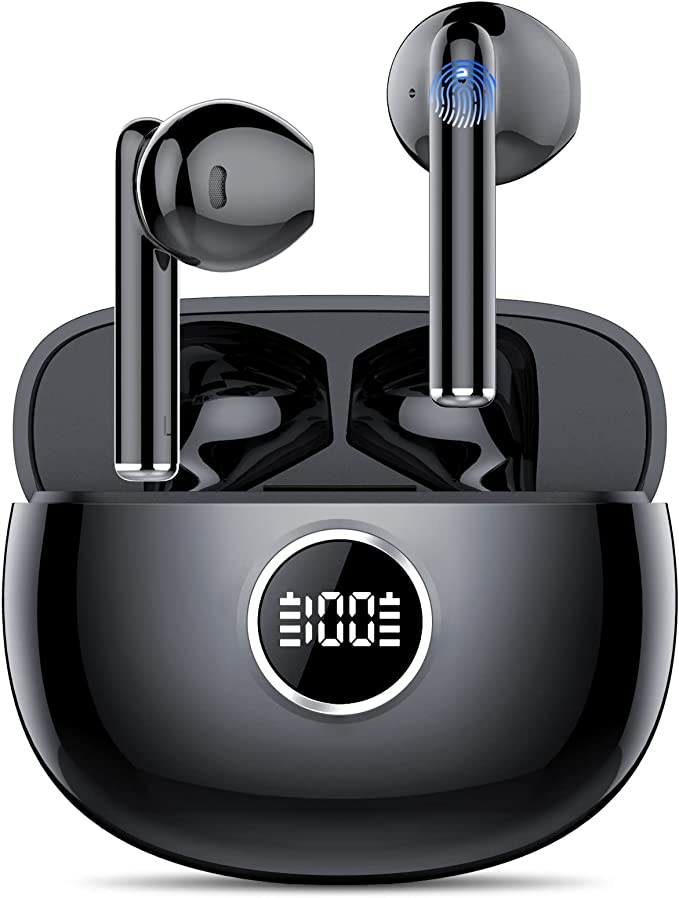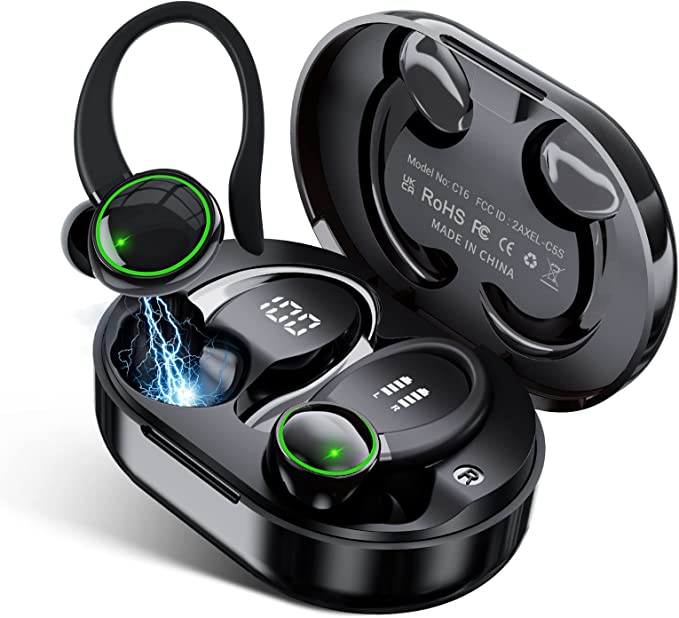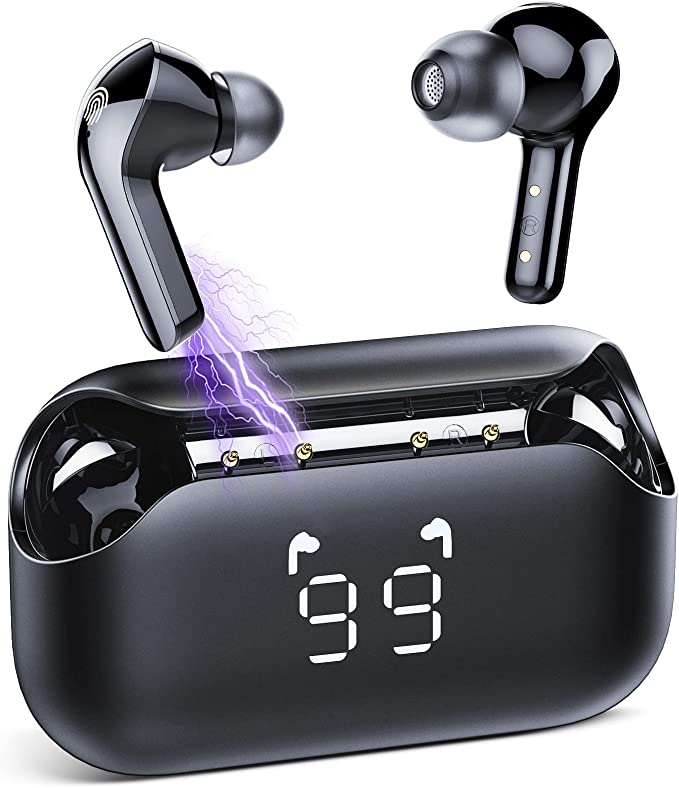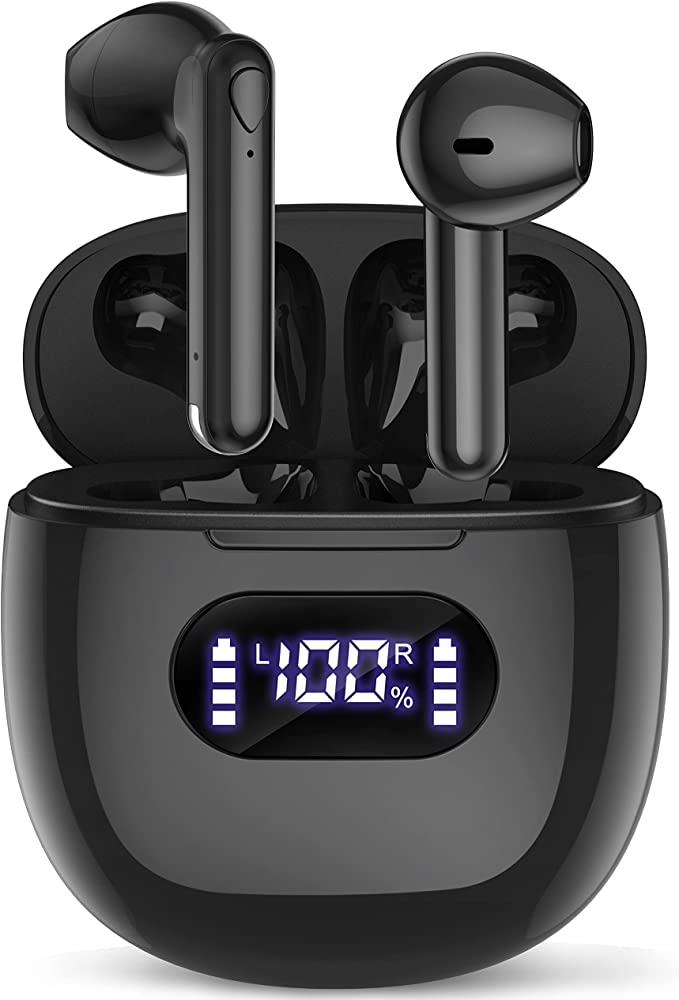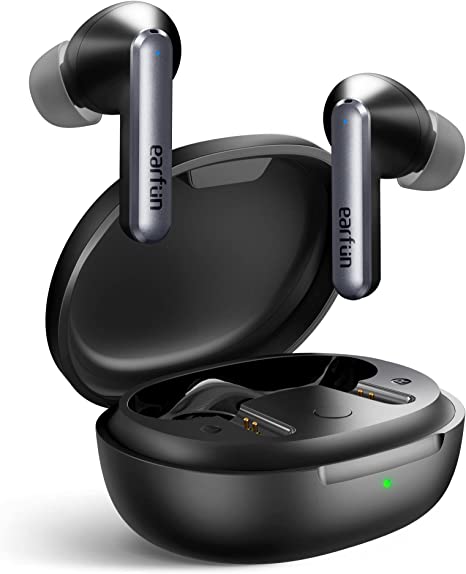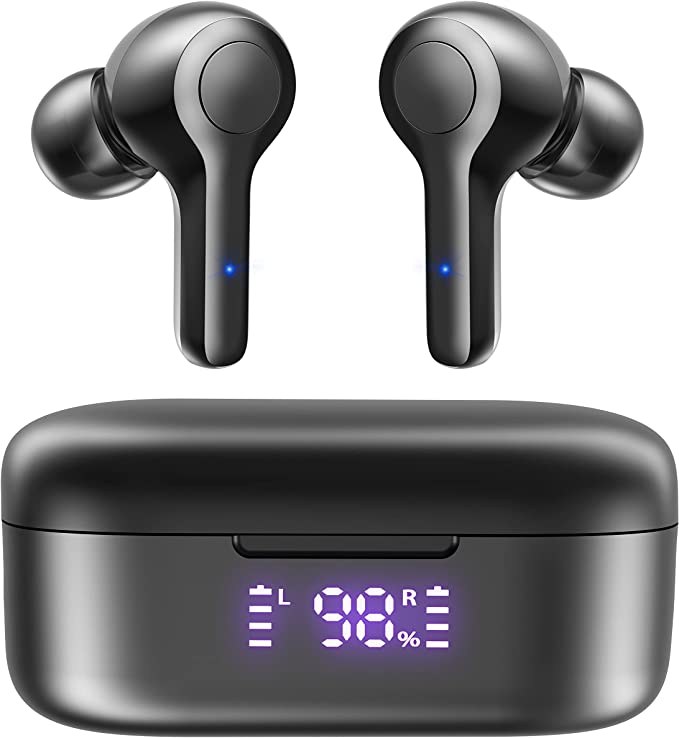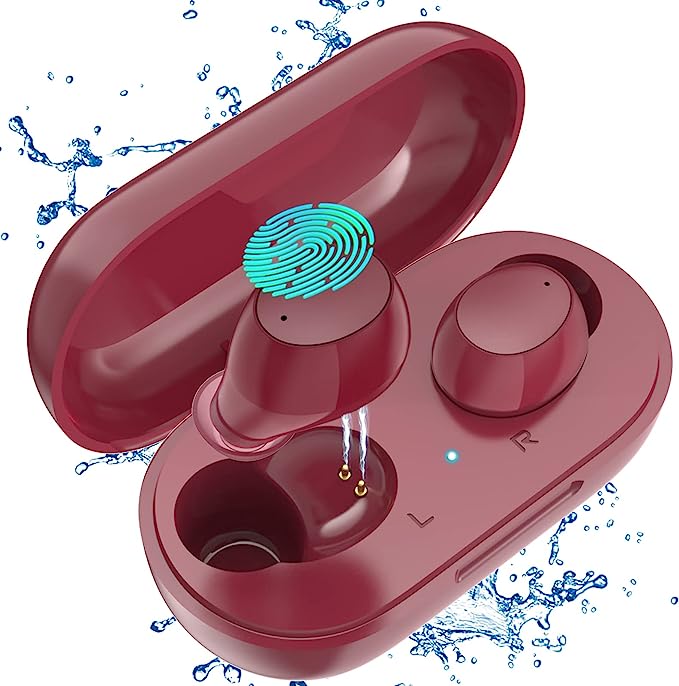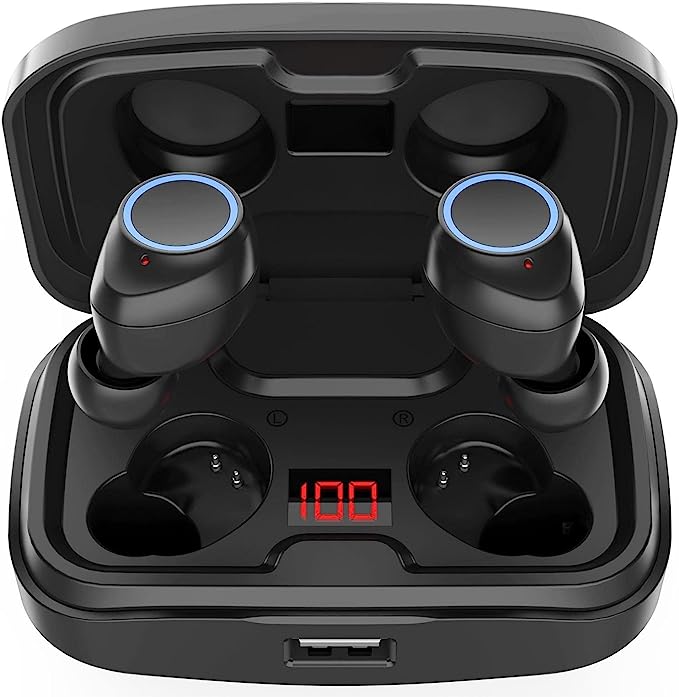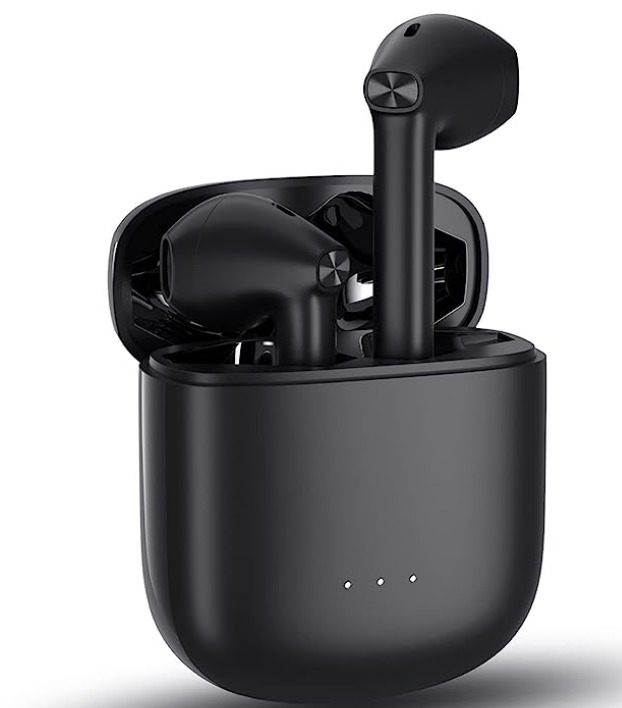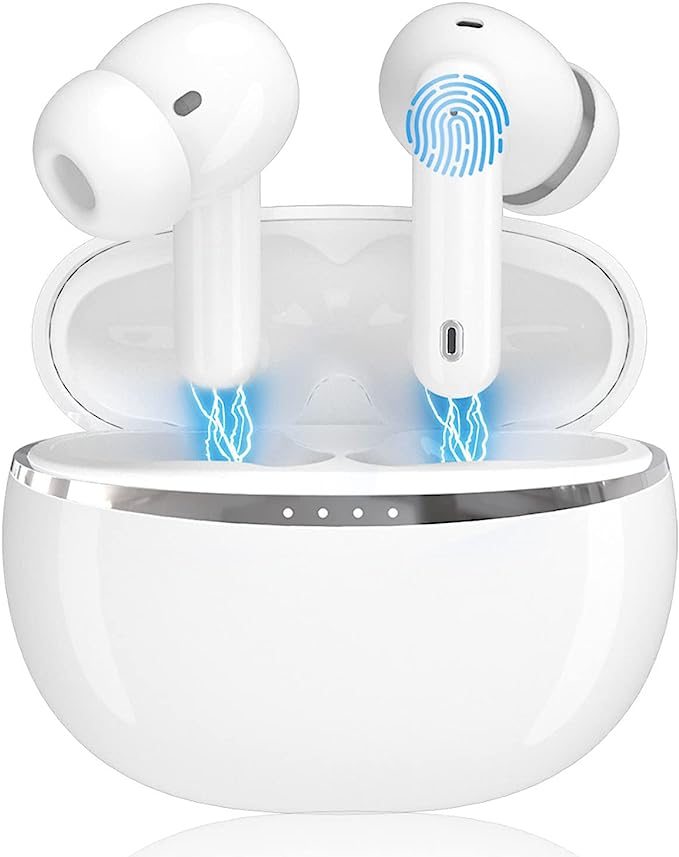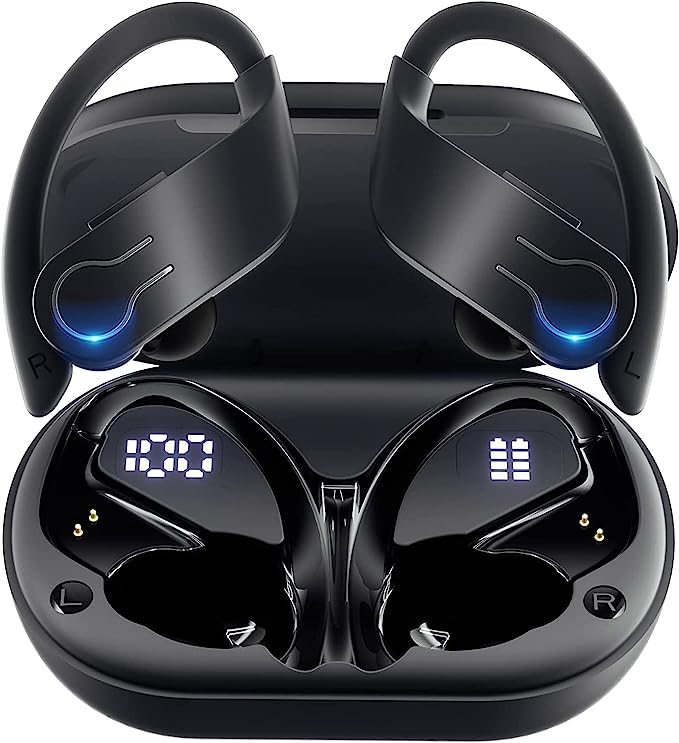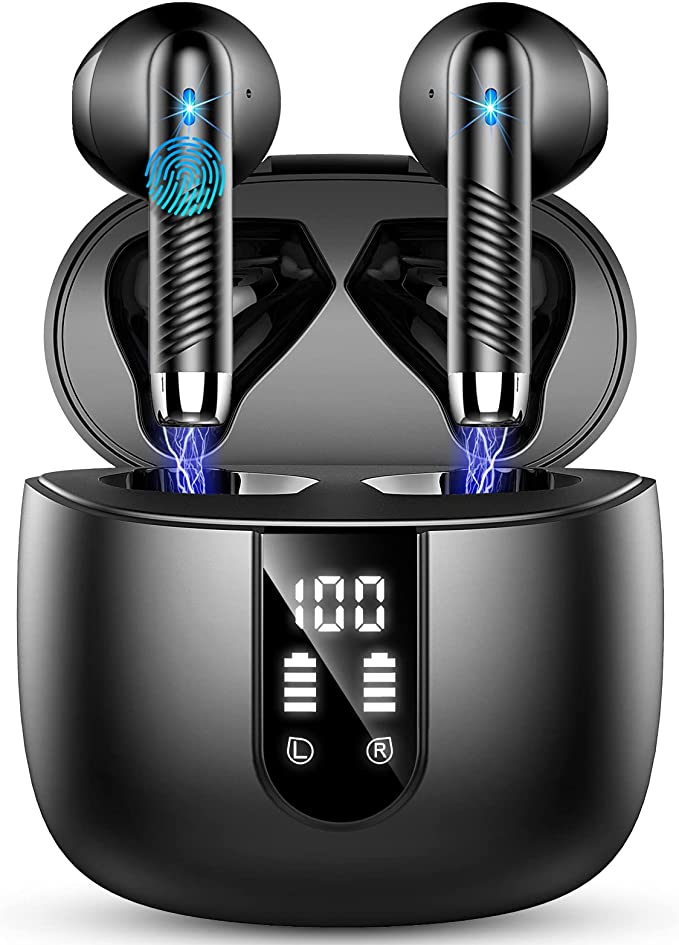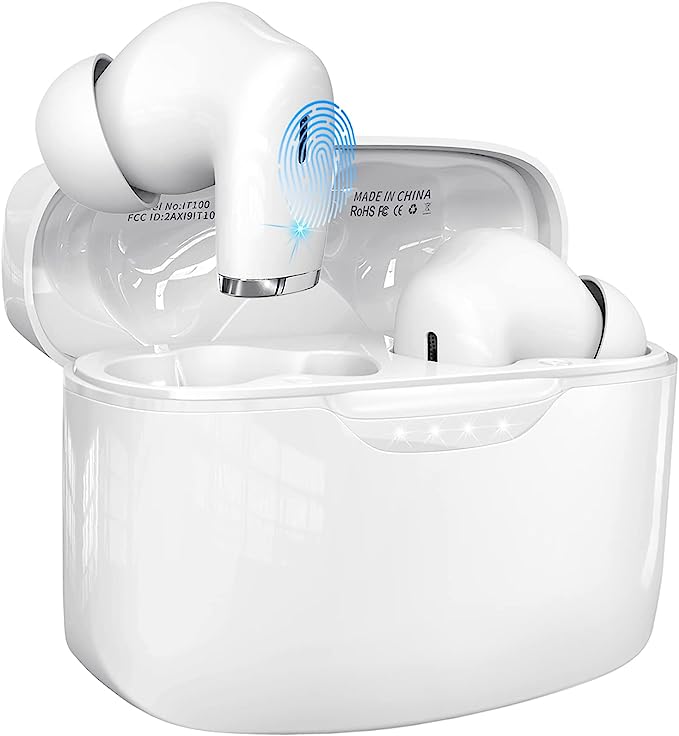DUVOSS Q1 Wireless Earbuds: The Science Behind Bluetooth 5.3, Extended Playtime, and Clear Call Technology
Update on May 15, 2025, 10:03 a.m.
Our lives are increasingly scored by an invisible soundtrack. In the bustling symphony of a city street, the focused hum of an open office, or the quiet solitude of a morning jog, tiny wireless earbuds have become our personal conductors, crafting individual soundscapes that move with us. These miniature marvels of technology offer us music, connection, and sometimes, a welcome pocket of peace. But have you ever paused to consider the intricate science and engineering concertedly playing within these discreet devices?
Let’s embark on a journey to demystify some of this technology. We’ll use the DUVOSS Q1 Wireless Earbuds as our conceptual “specimen.” While the information snippet available for this particular model indicates it’s “currently unavailable” and provides only a descriptive title, the features it purports to offer—like Bluetooth 5.3, a 49-hour playtime, 4-microphone clear call technology, HiFi stereo sound with deep bass, and a waterproof design—are emblematic of the advancements shaping the modern wireless audio experience. Our exploration, therefore, will focus on the general scientific principles behind such claimed features, inviting a deeper appreciation for the sophisticated technology we often take for granted.

The Unseen Handshake: Decoding Bluetooth
At the heart of any wireless earbud’s magic is its ability to connect, to form an unseen handshake with your phone, laptop, or TV. The DUVOSS Q1 earbuds, for instance, claim to use Bluetooth 5.3. But what lies behind this name, a name романтично borrowed from Harald “Bluetooth” Gormsson, a 10th-century Danish king famed for uniting warring Scandinavian tribes? Just as King Harald connected disparate peoples, Bluetooth technology connects disparate devices.
The journey of Bluetooth technology is one of constant refinement. Originating in the labs of Ericsson in Sweden in the 1990s, it was conceived as a short-range wireless alternative to cumbersome data cables. Each iteration, from the early 1.0 to the modern 5.x series, has brought significant improvements. Bluetooth 5.3, as a standard, generally builds upon the strengths of its predecessors like 5.0, 5.1, and 5.2. These advancements typically translate into several key benefits for the user. Think enhanced connection stability, meaning your music is less likely to stutter or drop, even in areas crowded with other wireless signals. Another crucial improvement is power efficiency; modern Bluetooth chips are designed to be frugal with energy, a vital factor for battery-dependent devices like earbuds. Furthermore, newer Bluetooth versions can support higher data transfer rates and may offer features that lay the groundwork for next-generation audio experiences, such as LE Audio, which promises further enhancements in audio quality and power saving.
How does this wireless communication actually happen? In essence, Bluetooth operates in the 2.4 GHz Industrial, Scientific, and Medical (ISM) radio band. To avoid interference from other devices using this popular frequency (like Wi-Fi routers or microwave ovens), it employs a clever technique called Frequency-Hopping Spread Spectrum (FHSS). Imagine a nimble dancer gracefully navigating a crowded ballroom, constantly changing steps and positions to avoid bumping into others. Similarly, Bluetooth devices rapidly hop between dozens of different frequencies within the band, thousands of times per second, following a pseudo-random sequence known to both the sending and receiving device. This makes the connection robust and resistant to interference. For a device like the DUVOSS Q1 that claims compatibility with TVs, phones, PCs, and laptops, a reliable Bluetooth standard is the invisible backbone ensuring your audio journey is smooth and uninterrupted, whether you’re engrossed in a movie, taking an important call, or lost in your favorite playlist during a workout.

The Unending Encore? The Pursuit of Extended Playtime
One of the most sought-after features in wireless earbuds is longevity – the ability to power through your day, and perhaps even beyond, without a desperate scramble for a charging cable. The DUVOSS Q1 earbuds are listed with an impressive 49-hour playtime. How do these tiny earpieces achieve such audio marathons?
The secret lies in a harmonious blend of battery chemistry, energy-efficient components, and the clever design of the charging case. The powerhouses within most wireless earbuds are miniature Lithium-ion (Li-ion) batteries. These rechargeable batteries are a marvel of modern chemistry, celebrated for their high energy density—meaning they can store a significant amount of electrical energy in a very small and lightweight package. Their development, which earned a Nobel Prize in Chemistry in 2019, has revolutionized portable electronics.
However, the earbuds’ internal batteries alone rarely account for such extended playtimes. When you see a figure like “49 hours,” as claimed for the DUVOSS Q1, it almost invariably refers to the total playtime achievable with the accompanying charging case. This case isn’t just for storage; it’s a portable power bank for your earbuds. Once the earbuds run low, popping them back into their magnetically aligning slots in the case gives them a fresh charge, often multiple times over, before the case itself needs recharging.
Beyond sheer battery capacity (measured in milliampere-hours, mAh), the overall efficiency of the system is paramount. This is where technologies like Bluetooth Low Energy (BLE), a fundamental part of modern Bluetooth standards like the claimed 5.3 in the DUVOSS Q1, play a critical role. BLE is specifically designed for minimal power consumption during periods of inactivity or low data transfer. Furthermore, the audio chipsets and processors within the earbuds are engineered to perform their tasks—decoding audio, managing connections, processing sound—while sipping, not gulping, power. Intelligent firmware also contributes by managing power states effectively, putting parts of the earbuds into a deep sleep mode when not actively in use. For the user, this translates into the freedom of an untethered life: long-haul flights where your music doesn’t desert you, back-to-back virtual meetings without audio dropouts, or even just the simple convenience of forgetting to charge them every single night.

“Can You Hear Me NOW?”: The Art of the Clear Call with Multiple Microphones
In our hyper-connected world, the ability to communicate clearly is more vital than ever. Wireless earbuds have become an essential tool for hands-free calls, but a noisy environment can quickly turn a conversation into a frustrating exchange of “Sorry, can you repeat that?” The DUVOSS Q1 earbuds highlight a “4 Mics Clear Call” feature, suggesting a sophisticated approach to an age-old problem. This typically points to the implementation of Environmental Noise Cancellation (ENC) technology specifically for the microphones, ensuring your voice is heard, not the surrounding chaos.
Imagine you’re in a bustling café, the clatter of cups and the murmur of conversations forming a wall of sound. How can tiny earbuds isolate your voice? The answer often lies in a team of microphones working in concert. With a multi-mic array, like the four claimed for the DUVOSS Q1:
- One or more microphones are primarily positioned to capture your voice directly.
- Others are oriented to pick up the ambient sounds from your surroundings.
Clever digital signal processing (DSP) algorithms then become the conductor of this auditory information. By comparing the signals received from all microphones, the system can intelligently differentiate your voice from the unwanted background noise. This often involves beamforming, a technique where the microphones collectively create a directional “listening beam” focused on your mouth, effectively giving more weight to the sound coming from that direction. Simultaneously, noise suppression algorithms identify and reduce the intensity of those non-speech sounds. It’s like having a tiny, invisible sound engineer inside your earbuds, diligently filtering out the distractions so that the person on the other end of the call hears you, crisp and clear. This multi-microphone strategy aims to deliver the joy of being understood, making every call, whether a quick catch-up or a crucial business discussion, a more pleasant and productive experience.

The Soul of Sound: Deconstructing HiFi Stereo and Deep Bass
Beyond calls and connectivity, the ultimate purpose of any earbud is to deliver sound, to transport us with music, or immerse us in a story. The DUVOSS Q1 is described as offering “HiFi Stereo” and “Deep Bass,” terms that promise a rich and engaging listening experience. Let’s unpack what these mean from a scientific and experiential perspective.
“HiFi,” short for High Fidelity, is a term that audiophiles hold dear. It represents the pursuit of sound reproduction that is as faithful as possible to the original recording. This isn’t just about loudness; it’s about accuracy, detail, and clarity across the entire spectrum of audible frequencies. A HiFi system, or in this case, HiFi-marketed earbuds, aims to minimize distortion, present a wide and balanced frequency response (so no part of the music feels unduly exaggerated or missing), and render a clear “soundstage” where you can discern the placement of different instruments or voices. Think of it as the difference between seeing a blurry photograph and a crystal-clear, high-resolution image; HiFi audio strives for that sonic clarity.
“Stereo” sound is fundamental to creating this immersive experience. By delivering two distinct audio channels—one for the left ear and one for the right—stereo systems trick our brains into perceiving a three-dimensional soundscape. This is achieved by recording and mixing audio with intentional differences in timing, loudness, and frequency content between the two channels. When you listen in stereo, you’re not just hearing music; you’re placed within it, able to perceive the breadth and depth of the performance.
The allure of “Deep Bass” taps into a more visceral aspect of our hearing. Bass frequencies are the low, foundational notes that provide music with its rhythmic punch, warmth, and power. The ability of an earbud to reproduce deep bass effectively depends largely on its drivers (the miniature speakers inside each earbud) and the acoustic design of the earbud housing itself. Drivers, typically dynamic drivers in many consumer earbuds, move back and forth like tiny pistons to create sound waves. To produce convincing bass, these drivers need to be ableto move a sufficient amount of air, and the enclosure must be designed to resonate or channel these low frequencies effectively without sounding muddy or distorted. While the perception of “deep bass” can be subjective and influenced by musical genre preferences, its presence often contributes to a more impactful and satisfying listening experience, making drumbeats more palpable and basslines more resonant. The DUVOSS Q1, by claiming these features, aims to cater to listeners who appreciate both the clarity of HiFi and the satisfying richness of a well-represented low end.

Braving the Elements: The Promise of “Waterproof” Design
Life is unpredictable, and our gadgets often bear the brunt of our active lifestyles or unexpected weather. For wireless earbuds, which might accompany us on sweaty workouts, jogs in light rain, or simply be at risk from an accidental spill, some level of moisture protection is highly desirable. The DUVOSS Q1 earbuds are listed with the term “Waterproof,” a feature that speaks to their resilience.
While the specific Ingress Protection (IP) rating is not provided in the DUVOSS Q1’s snippet (e.g., IPX4, common for sweat and splash resistance, or higher ratings like IPX7 for temporary immersion), the term “waterproof” in the context of consumer electronics generally implies a design engineered to prevent water from reaching and damaging sensitive internal components. This is typically achieved through a combination of strategies:
- Sealed Casings: The outer shell of the earbuds and their charging case are designed with tight tolerances, gaskets, or seals to physically block the entry of water.
- Hydrophobic Coatings: Often, a specialized nano-coating is applied to both external and sometimes internal components. This ultra-thin layer repels water, causing it to bead up and roll off rather than seep in.
- Protected Components: Sensitive parts like microphone inlets or speaker outlets might have acoustic meshes that allow sound to pass but resist water penetration.
For a user, a “waterproof” claim, even without a specific IP rating, suggests a degree of confidence that the earbuds can withstand everyday encounters with moisture. This could mean peace of mind during an intense gym session, the ability to continue listening to a podcast if caught in an unexpected drizzle, or simply a greater overall durability against the minor accidents of daily life. This ruggedness enhances the versatility of the earbuds, making them a more reliable companion for various activities and environments.
The Symphony of Engineering: A Concluding Note
Our journey through the claimed features of a device like the DUVOSS Q1 reveals a sophisticated interplay of diverse scientific and engineering disciplines. From the intricacies of radio frequency communication in Bluetooth, the electrochemical marvels of lithium-ion batteries, and the intelligent algorithms sculpting call clarity, to the acoustic principles shaping our HiFi listening experiences and the material science ensuring durability – it’s a veritable symphony of innovation packed into an astonishingly small form factor.
While the DUVOSS Q1 itself remains a somewhat enigmatic “specimen” due to the limited information, the technologies it purports to embody are a testament to the relentless human drive to connect, to communicate, and to experience the world with richness and clarity. The next time you pop in your wireless earbuds, take a moment to appreciate the hidden genius an invisible orchestra of science and engineering working seamlessly to deliver your personal soundtrack to the world. It’s in these everyday objects that we can often find the most profound applications of our collective ingenuity, continuously refining the way we interact with sound and, ultimately, with each other.

